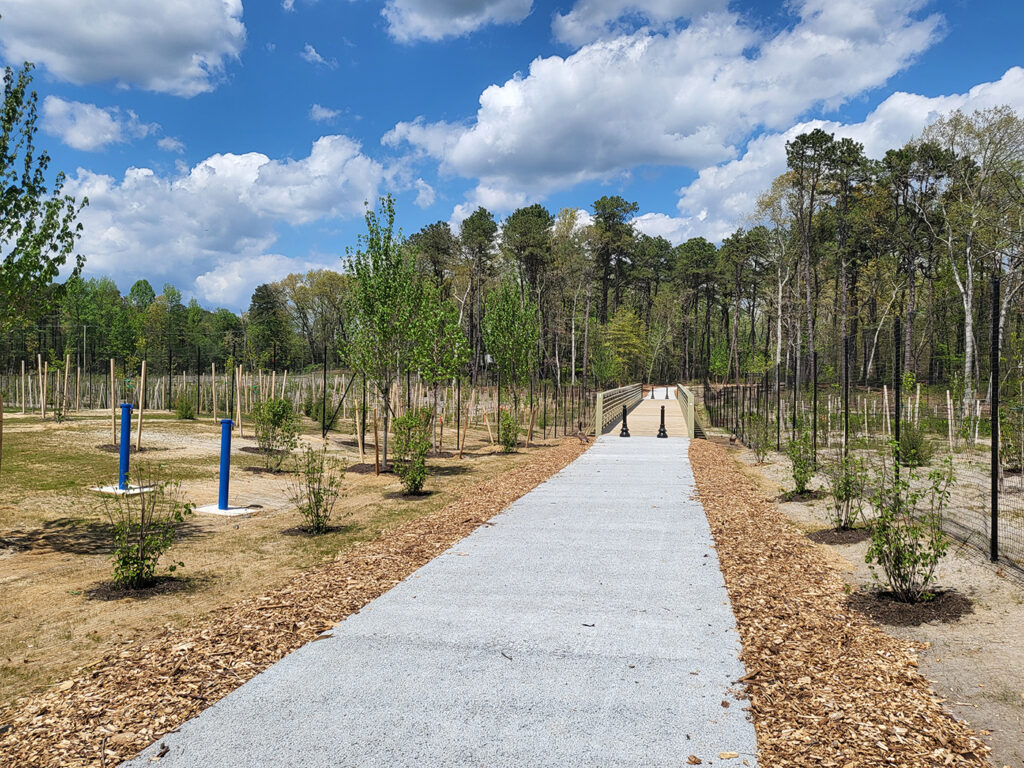United States Avenue Burn Site
The United States Avenue Burn Site project unit includes the Burn Site property located on the eastern side of United States Avenue in Gibbsboro, as well as areas along the historic Lucaston railroad on the western side of United States Avenue.
The Burn Site is an 11.5-acre undeveloped parcel located southeast of the former manufacturing plant. During the course of plant operations, records show that the Burn Site was used for the disposal of facility trash, along with sludge material dredged from the former facility wastewater treatment lagoons. A portion of the property was also used to burn paint wastes and used solvents; thus, the site was named the Burn Site.
Two streams, White Sand Branch and Honey (Haney) Run Brook, flow through the Burn Site and merge at the western boundary along United States Avenue before flowing through a culvert beneath United States Avenue and the railroad tracks, and into Bridgewood Lake.
The Remedial Investigation and Feasibility Study for the Burn Site unit were completed in 2017 and EPA released its final Record of Decision on September 29, 2017. The Consent Decree between EPA and Sherwin-Williams was finalized on April 16, 2019, authorizing Sherwin-Williams to proceed with the remedial design and remedial action.
The EPA-selected remedy includes the following components:
- Excavation, transportation and disposal of contaminated soils and sediments;
- Backfilling of excavated areas with clean fill and top soil, as required;
- Replanting of vegetation and restoration of the stream corridors and associated wetlands; and,
- Placement of institutional controls and deed restrictions to limit exposures to residual contamination remaining at depth, on certain properties as agreed to with the property owner.
Remediation and restoration activities are complete, and Sherwin-Williams is finalizing the administrative reports and filings. Sherwin-Williams will monitor the wetlands restoration areas for a minimum of five years to ensure permit obligations are met. In addition, institutional and engineering controls will be monitored and maintained longer-term.



